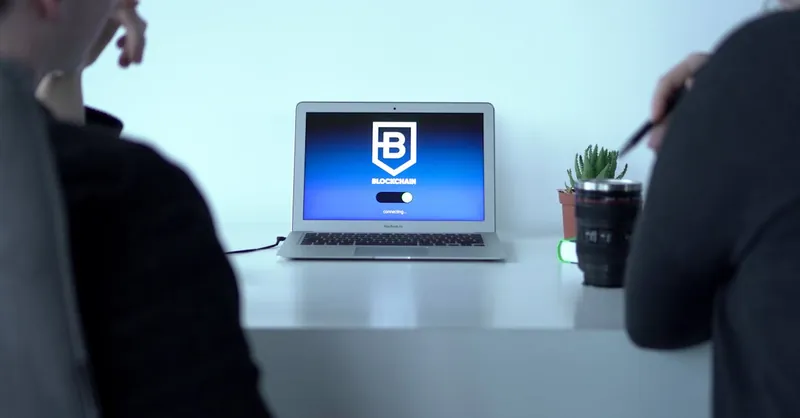Top Technology Tips to Boost Remote Work Productivity
Category: Productivity & Automation
Unlock Peak Productivity with Smart Remote Work Tech
Navigating remote work can feel overwhelming, especially when juggling multiple digital tools and tech setups. Whether you're a professional, entrepreneur, or tech enthusiast, your challenge is clear: how to maximize output without burning out or losing focus in a home environment packed with distractions. You've likely searched for the best software and gadgets that promise to streamline your workflow, yet feel stuck sifting through generic advice or outdated tips.
This post is crafted specifically for you — someone who already understands the basics of remote work but wants actionable, technology-based strategies to elevate productivity immediately. We dive into the latest AI-powered apps, automation hacks, and remote work tech that genuinely transform day-to-day efficiency. Unlike broad overviews, this guide pinpoints practical, scalable solutions that fit diverse workflows and industries.
Reading on, you'll discover how to harness AI integrations, optimize task automation, and select collaboration tools that cut down clutter and elevate focus. Expect clear, expert-backed recommendations paired with real-world applications so you can implement these technology tips right away and work smarter, not harder.
- Unlock Peak Productivity with Smart Remote Work Tech
- Essential Hardware and Ergonomic Setups to Enhance Remote Work Comfort and Efficiency
- Choosing the Right Collaboration and Communication Tools to Maintain Team Connectivity and Reduce Friction
- Leveraging AI-Powered Productivity Software for Intelligent Task Management and Prioritization
- Automation Tools and Workflows to Simplify Repetitive Tasks
- Cloud Storage and Cybersecurity Best Practices to Ensure Secure, Seamless Access to Files
- Time Management Techniques Integrated with Smart Calendars and Focus Apps
- Utilizing Analytics and Performance Tracking Tools to Optimize Remote Work Habits
- Incorporating Virtual Assistants and AI Chatbots for Scheduling and Information Retrieval
- Tips for Reducing Digital Distraction Using Technology Controls and App Blockers
- Future Trends in Remote Work Technology Professionals and Entrepreneurs Should Watch
Essential Hardware and Ergonomic Setups to Enhance Remote Work Comfort and Efficiency
Optimizing your remote workspace goes beyond software and digital tools—investing in the right hardware and ergonomic setups is crucial for sustained comfort and peak productivity. Poor posture or inadequate equipment can lead to fatigue and distraction, undermining even the best tech strategies. To create an environment that fuels focus and efficiency, prioritize these hardware essentials:
-
Ergonomic Chair and Adjustable Desk: A supportive chair with lumbar support paired with a height-adjustable desk helps maintain proper posture, reducing the risk of back pain and repetitive strain injuries. Standing desks or sit-stand converters enable flexibility and keep energy levels high throughout long work sessions.
-
High-Resolution Monitor(s): Upgrading to a large, high-resolution monitor—or dual monitors—expands your digital workspace, allowing easier multitasking and reducing eye strain. Look for features like blue light filters and anti-glare screens to protect your vision during extended hours.
-
Quality Keyboard and Mouse: Mechanical or ergonomic keyboards and precision mice minimize wrist strain and increase typing speed and accuracy. Wireless options help reduce desktop clutter, promoting a cleaner, distraction-free workstation.
-
Noise-Cancelling Headphones: To block out home distractions and sharpen focus during meetings or deep work, invest in noise-cancelling headphones. Many models also support integrated microphones optimized for clear communication in virtual calls.
-
Proper Lighting: Supplement natural light with adjustable LED desk lamps that offer customizable brightness and color temperature. Good lighting reduces eye fatigue and enhances mood, which is directly linked to productivity gains.
Incorporating these ergonomic and hardware improvements creates a professional-grade remote workspace that supports your physical well-being while amplifying your work efficiency. When your body feels comfortable and your technology is optimized, you unlock a more focused, energized, and productive workday.

Image courtesy of Minh Phuc
Choosing the Right Collaboration and Communication Tools to Maintain Team Connectivity and Reduce Friction
Seamless collaboration and communication are the backbone of effective remote work. Without the right tools, teams can experience disjointed workflows, miscommunication, and decreased productivity. Selecting the best platforms tailored to your team’s size, industry, and project complexity is essential to sustaining connectivity and minimizing collaboration friction.
When evaluating collaboration and communication tools, consider platforms that offer:
-
Real-time Messaging and Video Conferencing: Tools like Slack, Microsoft Teams, and Zoom enable instant communication and screen sharing, reducing delays in decision-making. Integrated video calls support face-to-face interaction, fostering stronger team relationships despite physical distance.
-
Task and Project Management Integration: Choose solutions that sync with task management apps such as Asana, Trello, or Monday.com. This integration ensures that conversations are contextually linked to ongoing tasks and deadlines, improving visibility and accountability.
-
File Sharing and Document Collaboration: Cloud-based platforms like Google Workspace and Microsoft 365 allow multiple users to co-edit documents simultaneously, maintaining version control and reducing email overload.
-
Customizable Notifications and Status Updates: Look for tools that let team members signal availability and prioritize notifications, which helps maintain focus and respects work-life balance during remote hours.
-
AI-Powered Features for Efficiency: Many modern collaboration tools incorporate AI to automate meeting transcription, suggest task priorities, and analyze communication patterns—helping teams optimize workflows and reduce repetitive manual tasks.
By investing in collaboration and communication platforms built for productivity, remote teams can stay aligned, reduce misunderstandings, and accelerate project delivery. Prioritizing tools that integrate smoothly into your existing tech stack and support asynchronous work will empower your team to collaborate more effectively, no matter where they are.

Image courtesy of RDNE Stock project
Leveraging AI-Powered Productivity Software for Intelligent Task Management and Prioritization
In the ever-evolving landscape of remote work, AI-powered productivity software has emerged as a game-changer, transforming how professionals manage and prioritize their workloads. These intelligent tools analyze your task lists, deadlines, and work habits to offer actionable insights, automate routine processes, and suggest optimal task sequences—helping you stay laser-focused on what truly matters.
How AI Enhances Task Management and Prioritization
-
Smart Task Prioritization: AI algorithms evaluate deadlines, task complexity, and dependencies to automatically rank your to-do list. This dynamic prioritization reduces decision fatigue and ensures high-impact activities are tackled first.
-
Automated Scheduling and Reminders: Integrated AI schedulers coordinate with your calendar to slot in tasks at ideal times based on your productivity patterns, sending timely alerts to keep you on track without overwhelming notifications.
-
Contextual Task Suggestions: By analyzing project data, communication threads, and past behavior, AI-driven platforms can recommend next steps or highlight overlooked tasks, preventing bottlenecks and missed deadlines.
-
Seamless Integration Across Tools: Modern AI productivity software often connects effortlessly with email, chat, project management, and document platforms, consolidating information and minimizing the need to switch contexts.
Top AI Productivity Tools to Boost Remote Work Efficiency
- ClickUp: Offers AI-powered task prioritization and automated workflows that adapt to your team’s evolving needs.
- Microsoft To Do with Cortana: Uses AI to suggest daily tasks and syncs with Microsoft 365 apps for unified task management.
- Motion: An AI-driven planner that dynamically schedules tasks and meetings to optimize your day.
- Notion AI: Enhances note-taking and task organization by summarizing information and generating action items smartly.
By integrating AI-driven task management solutions into your remote work routine, you reduce the manual overhead of juggling tasks, improve deadline adherence, and unlock a highly personalized productivity system tuned to your unique workflow. This intelligent automation is essential for minimizing burnout and maximizing focus, ultimately empowering you to accomplish more with less stress.

Image courtesy of Matheus Bertelli
Automation Tools and Workflows to Simplify Repetitive Tasks
One of the most effective ways to boost remote work productivity is by leveraging automation tools and workflows that handle repetitive, time-consuming tasks. Automating these routine processes frees up valuable time, allowing you to focus on higher-value activities that require creativity, critical thinking, and strategic input. Whether you’re managing emails, scheduling meetings, or tracking project updates, smart automation can dramatically reduce manual effort and minimize human error.
Key Benefits of Automating Repetitive Remote Work Tasks
- Time Savings: Automation eliminates redundant manual steps, accelerating daily routines and shrinking operational bottlenecks.
- Consistency and Accuracy: Automated workflows execute tasks precisely the same way every time, ensuring reliability and reducing costly mistakes.
- Enhanced Focus: By offloading mundane tasks, workers maintain higher concentration levels for demanding, goal-oriented work.
- Scalability: Automation processes can grow with your workload or team size without proportional increases in manual labor.
Essential Automation Tools and Workflow Platforms
- Zapier: Connects hundreds of apps to automate workflows like data syncing, email follow-ups, and file organization without any coding.
- IFTTT (If This Then That): Creates simple conditional automations across services to streamline notifications, social media posts, and device integrations.
- Integromat (Make): Enables complex, multi-step automation scenarios for integrating APIs, transforming data, and synchronizing cloud apps.
- Microsoft Power Automate: Particularly effective for organizations using Microsoft 365, this tool automates document approvals, email triggers, and data collection.
- Automate.io: Similar to Zapier, it supports automated workflows with CRM, marketing, and project management apps.
Tips for Designing Effective Automation Workflows
- Identify repetitive and low-value tasks that consume significant time but add minimal strategic benefit.
- Start with simple automations, such as auto-responding to emails or syncing spreadsheets, then progressively build more sophisticated workflows.
- Use automation triggers like form submissions, calendar events, or incoming emails to initiate task sequences automatically.
- Regularly monitor and optimize workflows to remove redundancies and adapt to changing remote work demands.
By integrating these automation tools and workflow strategies, you not only streamline mundane processes but also cultivate a smarter work environment where technology actively supports your productivity goals. This shift from manual execution to automated management is pivotal for thriving in today’s remote-first work culture.

Image courtesy of MART PRODUCTION
Cloud Storage and Cybersecurity Best Practices to Ensure Secure, Seamless Access to Files
In remote work, reliable cloud storage combined with robust cybersecurity practices is essential for maintaining seamless access to files while safeguarding sensitive data. Cloud storage platforms not only enable real-time collaboration and file synchronization across devices but also reduce dependence on local storage vulnerabilities—making them foundational for efficient remote workflows.
Best Practices for Secure Cloud Storage
- Choose Reputable Cloud Providers: Opt for trusted services like Google Drive, Microsoft OneDrive, or Dropbox that offer strong encryption, regular security updates, and compliance with industry standards (e.g., GDPR, HIPAA).
- Enable Multi-Factor Authentication (MFA): Protect your cloud accounts by activating MFA to add an additional verification layer beyond just passwords, preventing unauthorized access.
- Regularly Backup Critical Files: Maintain backup copies either on a different cloud service or external drives to mitigate risks from ransomware attacks or accidental deletion.
- Use Role-Based Access Controls: Limit file and folder permissions based on user roles to ensure only authorized team members can view, edit, or share sensitive documents.
- Encrypt Sensitive Data: For extra protection, encrypt confidential files before uploading them to the cloud using tools like VeraCrypt or built-in encryption features from providers.
Cybersecurity Strategies for Remote Work File Access
- Secure Your Network: Always use a virtual private network (VPN) and avoid unsecured public Wi-Fi when accessing cloud files to encrypt internet traffic and prevent eavesdropping.
- Keep Software Updated: Ensure operating systems, browsers, and cloud storage apps receive timely updates to patch security vulnerabilities.
- Educate Teams on Phishing and Social Engineering: Many cloud breaches originate from compromised credentials via phishing attacks; training improves awareness and reduces risks.
- Implement Endpoint Security: Use antivirus software and firewalls on all remote devices to defend against malware that could compromise cloud data integrity.
- Monitor Access Logs and Alerts: Regularly review cloud storage access reports to detect unusual login attempts or file activities, enabling rapid incident response.
Adhering to these cloud storage and cybersecurity best practices empowers remote professionals and teams to work confidently and efficiently, ensuring that valuable data remains accessible but impenetrable. This balance of security and convenience is critical for sustaining productivity without risking costly data breaches or workflow interruptions in a remote-first environment.

Image courtesy of Jakub Zerdzicki
Time Management Techniques Integrated with Smart Calendars and Focus Apps
Mastering time management is essential for maximizing remote work productivity, and leveraging technology like smart calendars and focus apps can transform how you organize and execute your daily schedule. These tools not only help you allocate your time efficiently but also create an environment that minimizes distractions and sustains deep focus, key factors for achieving peak performance outside a traditional office.
Smart Calendars: Automating and Optimizing Your Schedule
Smart calendar apps such as Google Calendar, Outlook Calendar, and AI-enhanced platforms like Clockwise and Reclaim.ai go beyond simple meeting tracking. By integrating with your task management and communication tools, they intelligently:
- Prioritize and Block Time for High-Impact Work – Automatically schedule focus blocks during your peak productivity hours, ensuring deep work gets uninterrupted attention.
- Balance Meetings with Breaks – Proactively insert buffer times and short breaks between meetings to reduce cognitive overload and prevent burnout.
- Optimize Recurring Tasks and Deadlines – Use AI-driven suggestions to adjust recurring deadlines or routine task timing based on your workload changes in real time.
- Sync Across Devices and Teams – Maintain seamless coordination by syncing events, reminders, and availability across devices and amongst collaborators, reducing scheduling conflicts.
Focus Apps: Enhancing Concentration with Technology
Focus apps complement smart calendars by fostering a distraction-free environment through time-tested techniques like the Pomodoro method, time blocking, and task batching. Leading apps including Forest, Focus@Will, Freedom, and Toggl Track help you:
- Set Work Intervals and Breaks to maintain mental stamina and prevent fatigue.
- Block Distracting Websites and Notifications during focus periods, significantly reducing interruptions.
- Track Time Spent on Tasks for greater awareness of where your hours go, enabling more precise future planning.
- Integrate with Calendars and Task Managers to align focus sessions with scheduled priorities and deadlines effortlessly.
By combining smart calendar automation with dedicated focus apps, remote workers gain a powerful time management system that adapts dynamically to shifting priorities and work demands. This technology-enabled approach minimizes decision fatigue, promotes sustained concentration, and ultimately drives more consistent productivity gains in a remote setting. Incorporating these tools into your daily routine allows you to work smarter, respect your natural rhythms, and reclaim control over your time—the cornerstone of efficient and fulfilling remote work.

Image courtesy of freestocks.org
Utilizing Analytics and Performance Tracking Tools to Optimize Remote Work Habits
To truly boost remote work productivity, it's essential to move beyond intuition and leverage analytics and performance tracking tools that monitor your work patterns in real-time. These technology-driven insights enable you to identify productivity peaks and pitfalls, helping you refine your daily habits and workflows with precision. By understanding when and how you work best, you can optimize schedules, minimize distractions, and tailor your environment to sustain high performance.
How Analytics Enhance Remote Work Efficiency
-
Identify Productivity Trends: Tools like RescueTime, Toggl Track, and Time Doctor provide detailed reports on how your time is distributed across apps, websites, and tasks. This visibility helps reveal which activities consume the most time and when your focus naturally wanes, empowering data-driven adjustments.
-
Measure Task and Project Progress: Performance dashboards in platforms such as Asana, ClickUp, and Monday.com visualize task completion rates, bottlenecks, and team productivity metrics, enabling proactive intervention to stay on track and meet deadlines.
-
Optimize Work and Break Cycles: Analytics-driven apps can analyze your work sessions and recommend personalized break intervals aligned with your cognitive endurance, supporting sustained concentration and preventing burnout.
-
Set and Track Goals with Real-Time Feedback: By integrating goal-setting frameworks within productivity software, you receive ongoing progress updates and motivational nudges, enhancing accountability and boosting momentum.
Best Practices for Leveraging Performance Tracking Tools
- Regularly Review Analytics Reports to detect recurring distractions, workflow inefficiencies, or scheduling conflicts.
- Use data to experiment with adjustments in work timing, task prioritization, or environment setup and measure their impact on productivity.
- Combine individual performance data with team analytics to improve collaboration dynamics and resource allocation.
- Prioritize tools that provide privacy-conscious analytics ensuring your data is secure and respected.
By incorporating analytics and performance tracking technologies into your remote work routine, you transform productivity from a vague goal into a measurable, manageable process. This continuous feedback loop allows you to optimize your work habits intelligently, adapt to changing demands, and sustain peak performance over the long term—making your remote work not just harder, but smarter.
Image courtesy of Serpstat
Incorporating Virtual Assistants and AI Chatbots for Scheduling and Information Retrieval
In the realm of remote work productivity, virtual assistants and AI chatbots have become indispensable tools for managing day-to-day administrative tasks, especially scheduling and information retrieval. These AI-powered helpers automate routine interactions, streamline calendar management, and provide instant access to critical data—freeing you from manual coordination and enabling sharper focus on core responsibilities.
Enhancing Scheduling Efficiency with AI Virtual Assistants
AI virtual assistants such as Google Assistant, Microsoft Cortana, and specialized scheduling bots like x.ai and Clara Labs integrate seamlessly with your calendar and email platforms to automate meeting arrangements. They handle time zone differences, propose optimal meeting slots based on participants’ availability, and even send reminders or reschedule when conflicts arise. By offloading complex scheduling to AI, you eliminate endless email threads and reduce no-shows, making your remote workday smoother and more predictable.
Accelerating Information Retrieval and Decision-Making
Beyond scheduling, AI chatbots embedded within productivity suites or standalone platforms provide rapid access to documents, project statuses, and FAQs. Tools like Slack’s Workflow Builder bots or Notion AI can respond to queries instantly, summarizing key points or navigating large knowledge bases without interrupting your flow. This instant information retrieval cuts downtime and enhances team responsiveness, especially crucial when asynchronous communication is prevalent.
Key Benefits of Using AI Virtual Assistants and Chatbots
- Automated Meeting Management: From proposing times to sending follow-ups, AI reduces the cognitive load of calendar coordination.
- Instant Data Access: Quick answers from internal databases, project updates, or contact directories improve decision speed.
- 24/7 Availability: AI assistants operate round the clock, supporting global teams working across different time zones.
- Integration with Existing Workflows: Most AI assistants and chatbots integrate with popular remote work tools, ensuring smooth adoption without disrupting current processes.
By incorporating virtual assistants and AI chatbots into your remote work toolkit, you automate essential yet frequently overlooked tasks that interrupt deep work. This strategic use of AI not only saves valuable time but also enhances communication fluidity and organizational agility, empowering you to maintain consistent productivity in a remote-first environment.

Image courtesy of Matheus Bertelli
Tips for Reducing Digital Distraction Using Technology Controls and App Blockers
In the digital age of remote work, digital distractions can severely undermine your productivity and focus. Constant notifications, endless social media scrolls, and multitasking temptations fragment your attention, leading to decreased efficiency and increased stress. Fortunately, harnessing technology controls and app blockers empowers you to take back control over your digital environment, creating a distraction-resistant workspace that fosters deep work and sustained concentration.
Effective Strategies to Minimize Digital Distractions
-
Use App and Website Blockers: Tools like Freedom, Cold Turkey, and StayFocusd allow you to block or limit access to distracting websites and apps during predetermined focus periods. By enforcing tech-free zones on your devices, you reduce temptation and encourage habit formation around focused work.
-
Leverage Focus Modes and Do Not Disturb Settings: Built-in features on operating systems and smartphones — such as Focus Mode on Android, Screen Time on iOS, and Windows Focus Assist — can mute notifications and limit interruptions. Configuring these modes during deep work sessions creates a quieter digital environment tailored to productivity.
-
Schedule Notification Windows: Instead of reacting in real-time to every alert, set specific time blocks during the day to check emails, messages, and social media. This batching approach reduces constant task-switching and preserves your focus for priority work.
-
Customize Notification Settings for Apps: Disable non-essential notifications and prioritize alerts only from critical tools or contacts. Many communication apps like Slack and Microsoft Teams enable granular control over notification types and urgency, allowing you to filter noise effectively.
-
Implement AI-Powered Distraction Management: Emerging AI tools can detect when you’re switching between tasks frequently or spending excessive time on low-priority apps, then proactively suggest breaks or refocus sessions. Integrating such AI insights helps cultivate self-awareness and sustained attention.
By combining technology controls with smart app blocking strategies, you create digital boundaries that protect your cognitive bandwidth. This disciplined use of tech empowers remote workers to resist distraction, maintain momentum, and achieve a higher level of productivity through intentional, focused engagement with work.

Image courtesy of freestocks.org
Future Trends in Remote Work Technology Professionals and Entrepreneurs Should Watch
As remote work continues to reshape how we collaborate and create, staying ahead of emerging technology trends is crucial for professionals and entrepreneurs who want to sustain and amplify their productivity gains. The future of remote work technology is being driven by advancements in AI, immersive experiences, and hyper-automation—each promising to redefine workflows, communication, and work-life balance in profound ways.
AI-Driven Hyper-Personalization and Automation
Next-generation remote work platforms will harness AI-powered hyper-personalization, tailoring task recommendations, learning content, and productivity strategies to individual work patterns and goals. This deep customization enables:
- Adaptive Workflows that evolve automatically by analyzing your productivity data and adjusting task priorities or break schedules in real-time.
- Advanced Natural Language Processing (NLP) for more intuitive interaction with virtual assistants and chatbots, making scheduling, information retrieval, and decision support effortless.
- Predictive Analytics to anticipate project risks, optimize resource allocation, and suggest opportunities for collaboration before bottlenecks arise.
These AI enhancements will transform remote work from a reactive arrangement into a proactive, context-aware productivity ecosystem.
Immersive Collaboration with Extended Reality (XR)
The integration of Extended Reality—Augmented Reality (AR), Virtual Reality (VR), and Mixed Reality (MR)—into remote work tools will usher in immersive collaboration experiences that bridge the gap between physical and virtual presence. Expected technology benefits include:
- Virtual coworking spaces that replicate office dynamics, fostering spontaneity and creative brainstorming without geographical constraints.
- 3D data visualization and interactive dashboards to enhance understanding of complex projects and facilitate immersive training sessions.
- Haptic feedback and spatial audio to improve communication nuances, making remote meetings feel more natural and engaging.
Entrepreneurs leveraging XR will unlock new levels of team cohesion, innovation, and client engagement.
Blockchain and Enhanced Security Protocols
With remote work expanding globally, blockchain technologies and decentralized security protocols will become vital to ensure trust, transparency, and data integrity. Anticipated applications are:
- Secure, immutable contract management and digital identity verification, reducing fraud and streamlining onboarding.
- Decentralized cloud storage solutions that enhance data privacy and reduce reliance on centralized providers vulnerable to breaches.
- Smart contracts automating remote work agreements, payments, and compliance tracking efficiently.
Professionals investing early in blockchain-enabled remote work infrastructure will benefit from stronger cybersecurity and streamlined administrative workflows.
Integration of IoT and Smart Environments
The future workspace will extend beyond screens to include Internet of Things (IoT) enabled devices that optimize physical environments for remote productivity. Trends to watch:
- AI-powered smart desks and lighting that automatically adjust ergonomics and ambiance based on your work habits and health data.
- Wearable technology monitoring focus, stress, and fatigue, providing actionable feedback to enhance well-being and performance.
- Seamless device ecosystems where smart speakers, assistants, and home automation work together to minimize interruptions and streamline task execution.
By blending digital and physical workspaces, IoT innovations will create holistic environments tailored to maximize mental and physical efficiency.
Keeping abreast of these future remote work technology trends equips professionals and entrepreneurs to not only adapt but thrive in a rapidly evolving digital economy. Integrating AI, immersive realities, blockchain security, and IoT smart environments into your remote work strategy will set the foundation for sustained productivity, innovation, and competitive advantage in the years ahead.

Image courtesy of Morthy Jameson
